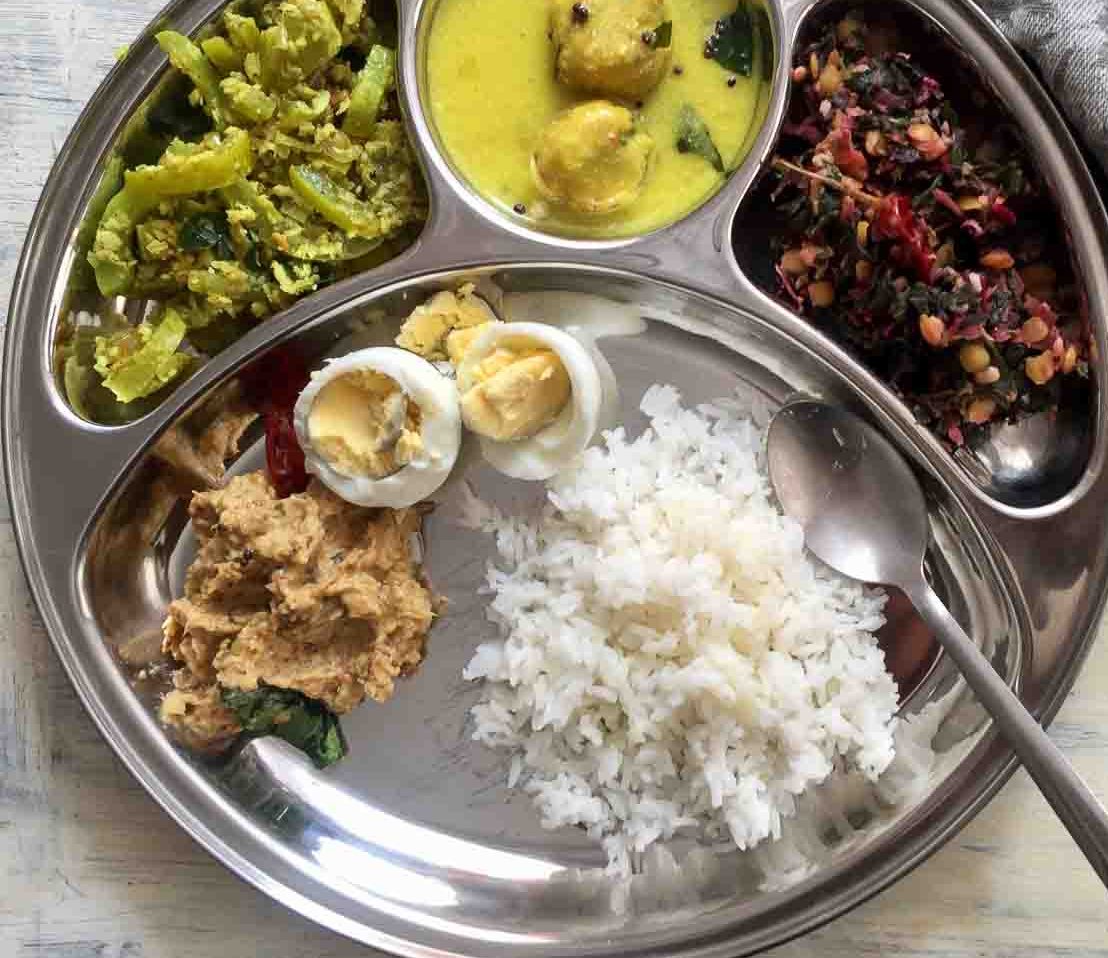Can people with diabetes eat rice? Or should they opt for millet or wheat? These are commonly asked questions. Dr V Mohan speaks of the right dietary balance to manage diabetes.
Published Nov 16, 2024 | 7:00 AM ⚊ Updated Nov 16, 2024 | 7:00 AM

balanced meal with carbs, proteins and fat essential for diabetes reversal and management/Supplied
“What should I eat,” is a common question that diabetes patients ask.
In the rice-dominating South India, this question often spirals into a debate—should one switch to ragi, wheat, or completely cut out carbs?
The debate is justifiable since research has already linked South Asians, especially South Indians, to a higher prevalence of diabetes, with dietary habits playing a significant role. So, what is an ideal diabetic diet?
Rice, wheat, or ragi all fall under the carbohydrate category and contain about 70% carbohydrates. Switching from one to another may not provide a significant advantage in managing blood sugar levels.
While millets have slightly more protein, fiber, and phytonutrients, they are still primarily carbohydrates.
What truly matters is controlling the intake. Regardless of whether you choose rice, wheat, or millet, the key is to limit the quantity consumed.
Diabetes specialist Dr V Mohan, Chairman of Dr Mohan’s Diabetes Specialities Centre and Madras Diabetes Research Foundation, advocated for the plate concept, or the thali concept, which focuses on portioning your meals to achieve balance. Here’s how it works:
Fill half your plate with green leafy, non-starchy vegetables like spinach, cabbage, beans, broccoli, or asparagus. These are low in calories and rich in essential nutrients like iron, B12, and fiber. Avoid starchy vegetables such as potatoes, beetroot, yam, and tapioca, which can spike blood sugar levels.
Non-vegetarians may include lean protein sources such as fish, chicken, or egg whites. Vegetarians should typically opt for lentils, tofu, paneer, or legumes like Bengal gram, green gram, and kidney bean.
This is where rice, wheat, or millet comes in. Limiting it to a quarter of the plate allows enjoying carbs in a controlled manner. This distribution ensures a balanced diet with the right mix of carbohydrates, protein, fats, fiber, vitamins, and minerals.
Dr Mohan said that the average Indian diet, across all states, consists of 65-70% carbohydrates. This excessive intake is a major contributor to high blood sugar levels and the increasing prevalence of diabetes.
“By reducing carbohydrates and incorporating more protein and fiber, diabetes could be managed significantly better. “Eating too much carb leads to high blood sugar levels and an increase in number of diabetes cases,” he warned.
However, he opined that eliminating carbohydrates, as seen in diets like keto, is impractical and unhealthy. Protein intake, while essential, is limited to about 20% of the diet, leaving the remaining calories to come from fats or carbohydrates.
A high-fat diet, especially one rich in saturated fats, can increase LDL (bad) cholesterol and the risk of heart disease, Dr Mohan added.
Instead, he suggested focusing on reducing carbohydrates moderately and including healthy fats like monounsaturated fats from nuts, seeds, groundnut oil, sesame oil, or mustard oil. Avoid overconsuming saturated fats like coconut oil, palm oil, and ghee.
Kerala’s population is often cited as an example of high saturated fat consumption through coconut oil. Yet, Keralites have lower rates of heart disease and longer lifespans.
Dr Mohan explained that their diet is well-rounded, incorporating fish, vegetables, and a balanced mix of nutrients. It’s the overall composition of the diet, not one specific food, that determines health outcomes.
Dr Mohan explained that dairy products can also play a role in a diabetic diet. One glass of milk (250 ml) is sufficient to meet daily calcium needs, particularly for men. Women, especially those postmenopausal, may require additional calcium supplements. Curd and yogurt can be excellent alternatives.
The debate about rice versus millet versus wheat is less about the type of carbohydrate and more about the portion size and overall balance of the diet.
By focusing on the plate concept, reducing carbohydrates, and increasing protein and fiber intake, managing diabetes becomes much more achievable, Dr Mohan added.
(Edited by Majnu Babu).
